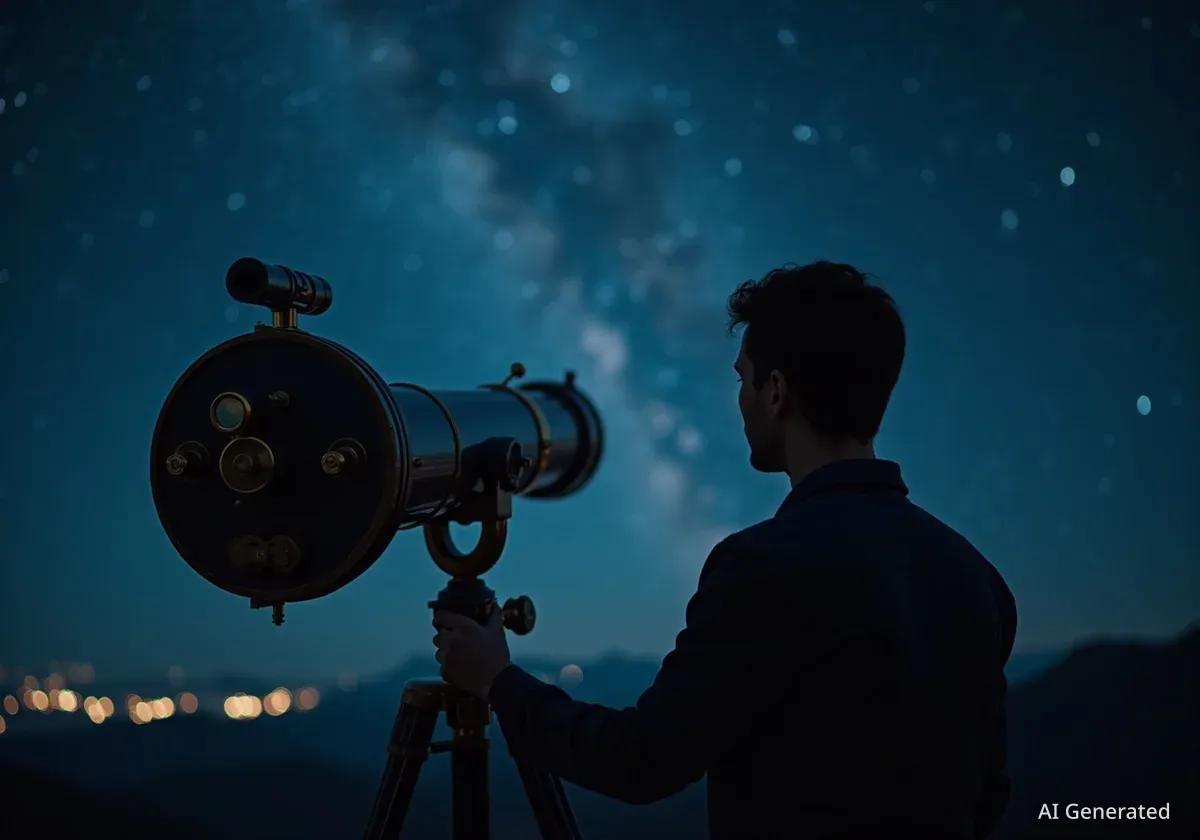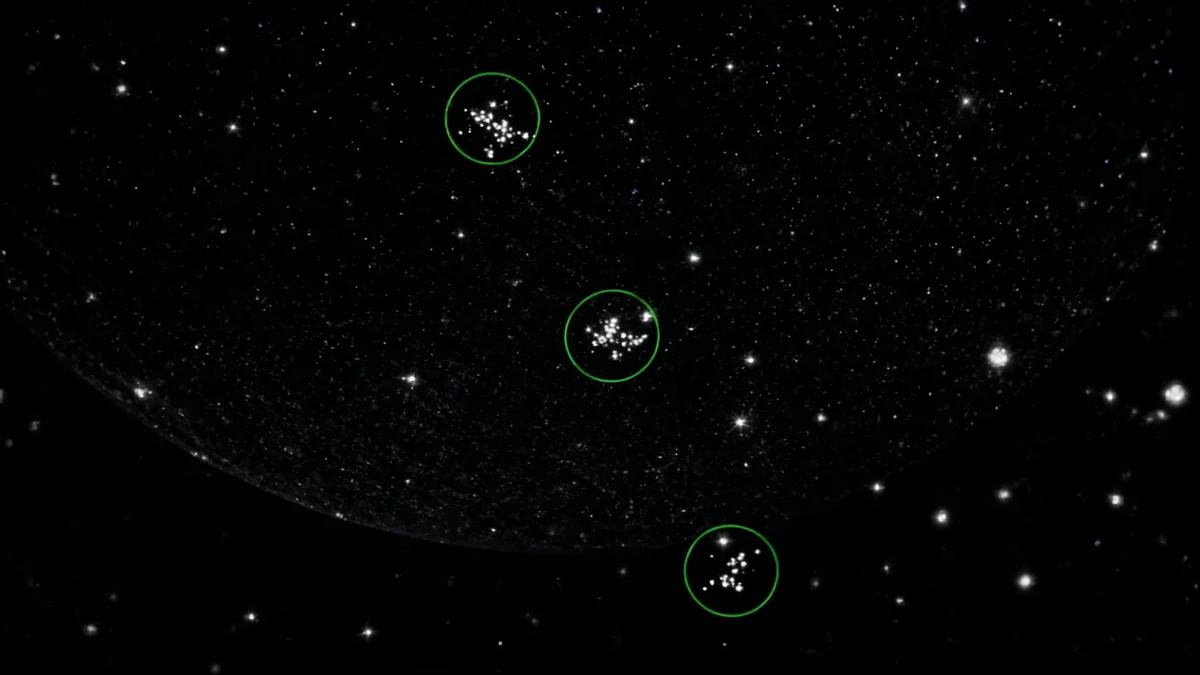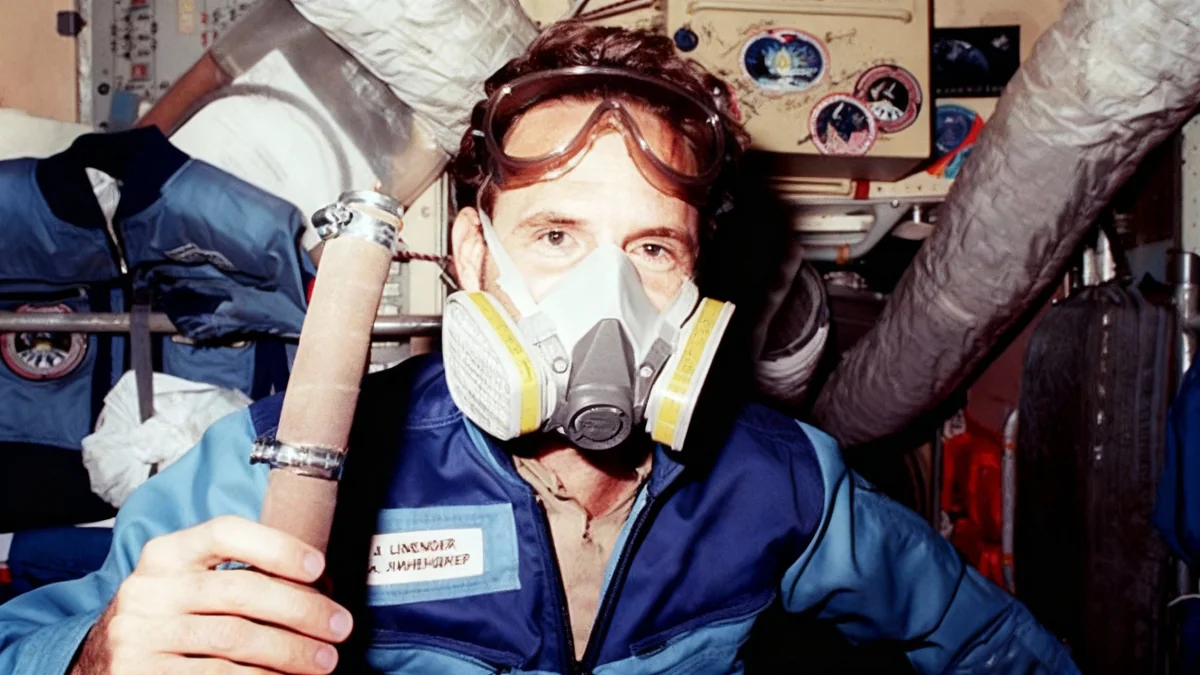On the night of October 5, 1923, astronomer Edwin Hubble made an observation at the Mount Wilson Observatory that fundamentally altered humanity's understanding of the cosmos. By identifying a specific type of star in a distant celestial object, he provided the first concrete evidence that our Milky Way galaxy was not the entirety of the universe, but merely one of countless galaxies in a vast, expanding space.
The discovery, recorded on a photographic plate, settled a long-standing scientific debate and set the stage for modern cosmology. The star, known as M31-V1, became a critical piece of evidence demonstrating the true scale of the universe.
Key Takeaways
- On October 5, 1923, Edwin Hubble identified a Cepheid variable star in the Andromeda nebula.
- This discovery allowed him to calculate its distance, proving Andromeda was a separate galaxy far outside the Milky Way.
- The finding effectively ended the "Great Debate" in astronomy and confirmed the universe was vastly larger than previously believed.
- This work, building on Henrietta Swan Leavitt's research, led to the concept of an expanding universe.
A Fateful Night at the Observatory
Working with the powerful 100-inch Hooker telescope near Pasadena, California, Edwin Hubble was examining a faint patch of light known as the Andromeda nebula. For years, astronomers had debated the nature of such spiral nebulae. Were they gas clouds within our own galaxy, or were they separate, distant systems of stars?
During his observation, Hubble captured a series of images on glass photographic plates. On one plate, he identified what he initially believed to be a nova—an exploding star. He marked it with an "N." However, upon comparing this plate with others taken on previous nights, he noticed something unusual. The star's brightness was not the result of a single explosion; instead, it was fluctuating in a regular, predictable cycle.
Realizing his initial assessment was incorrect, Hubble famously crossed out the "N" on his plate and wrote "VAR!" in its place. He had not found a nova, but a variable star—specifically, a Cepheid variable. This type of star was already known to pulsate, rhythmically brightening and dimming over a set period. This reclassification would have profound consequences for the field of astronomy.
The Importance of a 'Standard Candle'
Hubble's identification of the star as a Cepheid variable was significant because of earlier work by astronomer Henrietta Swan Leavitt. In 1912, while working at the Harvard College Observatory, Leavitt had studied thousands of variable stars in the Magellanic Clouds, two small galaxies visible from the Southern Hemisphere.
Henrietta Leavitt's Groundbreaking Work
Henrietta Swan Leavitt discovered a direct relationship between the luminosity (intrinsic brightness) of a Cepheid variable star and the period of its pulsation. She found that brighter Cepheids had longer periods. This period-luminosity relationship meant that if an astronomer could measure how long it took for a Cepheid to complete one cycle of brightening and dimming, they could determine its true brightness. By comparing this true brightness to its apparent brightness as seen from Earth, they could accurately calculate its distance.
Leavitt's discovery provided astronomers with a powerful tool for measuring cosmic distances, turning Cepheid variables into what are known as "standard candles." These are astronomical objects with a known luminosity, which serve as reliable markers for gauging distances across space. Hubble understood immediately that finding a Cepheid in Andromeda gave him the key to solving the debate about its location and nature.
Settling the Great Debate
At the time of Hubble's discovery, the astronomical community was divided. The prevailing view, championed by Harlow Shapley, was that the Milky Way constituted the entire universe and that spiral nebulae like Andromeda were relatively small objects contained within it.
A competing theory, advocated by Heber Curtis, proposed an "island universe" model. Curtis argued that the spiral nebulae were, in fact, immense and distant galaxies, comparable in size to our own Milky Way. The debate had been ongoing for years, lacking the definitive observational evidence needed for a resolution.
"Hubble's discovery of the cepheid next door buttressed Curtis' argument that Andromeda was a separate galaxy from our own," notes the original source material on the historical event. This single data point provided the crucial evidence that was missing.
Over the following year, Hubble continued to observe the star, M31-V1. Using Leavitt's period-luminosity relationship, he calculated the distance to Andromeda. His initial estimate was approximately 900,000 light-years. While modern measurements place Andromeda at a more accurate 2.5 million light-years away, Hubble's calculation was still monumental. It placed Andromeda far beyond the known boundaries of the Milky Way, which was then thought to be about 100,000 light-years in diameter. This confirmed that Andromeda was indeed a separate galaxy.
From a Vast Universe to an Expanding One
The discovery of Andromeda's true nature was just the beginning. The method Hubble used to measure its distance became a cornerstone of his subsequent research. He and his colleague, Milton Humason, began measuring the distances to other galaxies using Cepheid variables.
Redshift and the Expanding Universe
Hubble combined his distance measurements with observations of galactic "redshift." Redshift is a phenomenon where light from distant objects moving away from an observer is stretched, shifting its wavelength toward the red end of the electromagnetic spectrum. He found a direct correlation: the farther away a galaxy was, the faster it was moving away from us. This observation provided the first observational proof that the universe is expanding.
This relationship is now known as Hubble's Law, and the rate of expansion is called the Hubble constant. This finding validated theoretical predictions made earlier by physicists like Georges Lemaître based on Einstein's theory of general relativity. The idea of a static, unchanging universe was replaced by a dynamic, expanding one that had a beginning—a concept that would later evolve into the Big Bang theory.
Today, the legacy of Hubble's 1923 observation continues. While we know the universe is expanding, precise measurements of the expansion rate using different methods have produced conflicting results—a problem known as the "Hubble tension." Scientists are still working to resolve this discrepancy, which may point to new, undiscovered physics. It all began with a single, flickering star noted on a glass plate nearly a century ago, an observation that opened our eyes to the true immensity of the cosmos.





